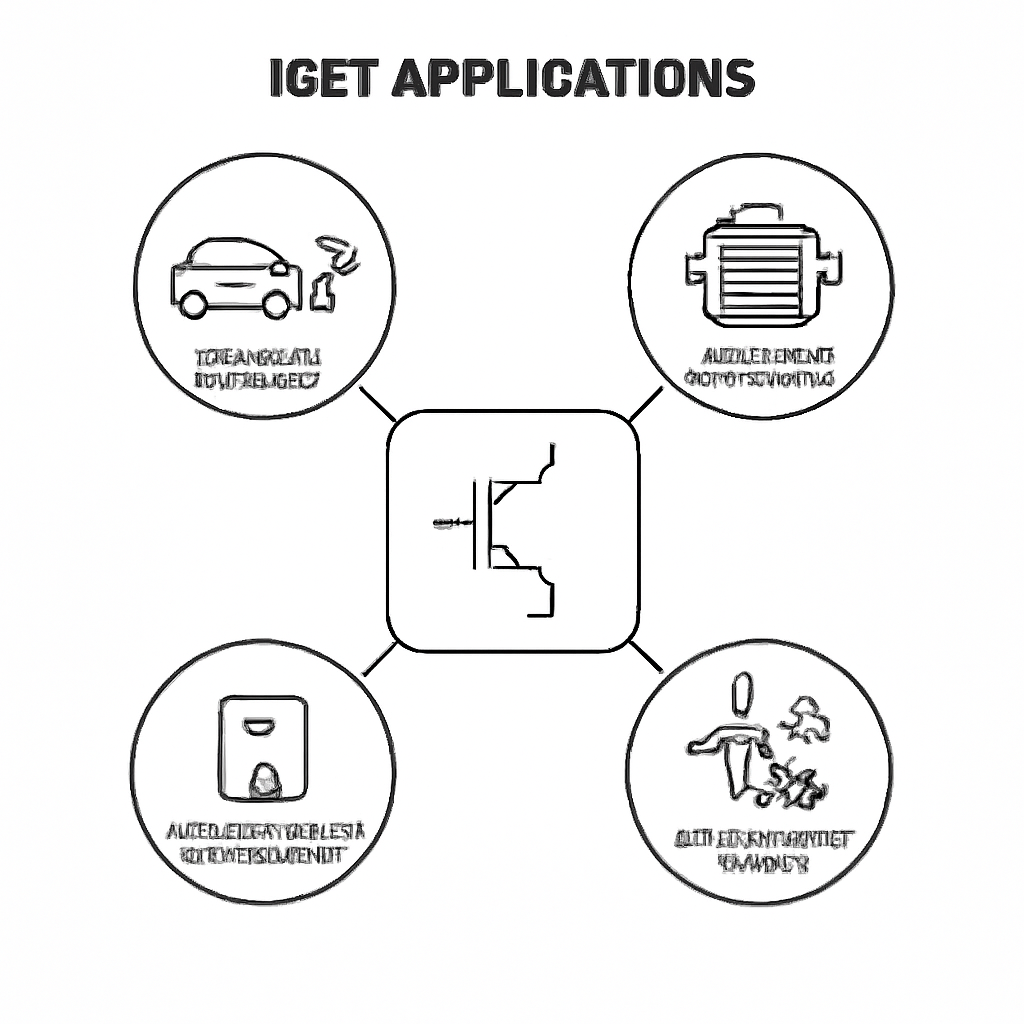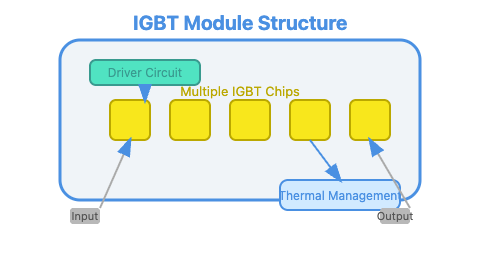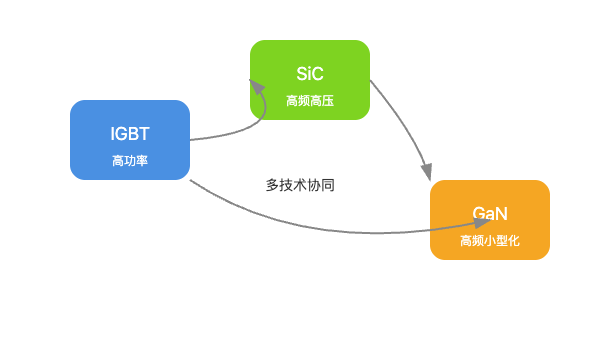What is an IGBT and Why is it So Important?
The Insulated Gate Bipolar Transistor (IGBT) is a hybrid power semiconductor device that uniquely combines the voltage-driven characteristics of a MOSFET with the high-current handling capabilities of a BJT. IGBTs offer low conduction loss, high current density, easy drive control, and excellent thermal performance, making them the preferred choice for high-voltage, high-current applications.
IGBTs are widely used in:
-
Electric Vehicle (EV) Drive Systems
-
Industrial Motor Inverters
-
Solar and Wind Power Inverters
-
Uninterruptible Power Supplies (UPS)
-
Railway Traction Systems
As the world transitions toward carbon neutrality and energy efficiency, IGBT applications continue to expand rapidly, positioning IGBT as a core technology supporting the electrified future.

IGBT Modules: Integrated and Efficient Power Solutions
In modern power electronics, IGBTs are commonly used in modular forms. An IGBT module typically integrates:
-
Multiple IGBT chips
-
Driver circuits
-
Advanced thermal management systems
This highly integrated design significantly simplifies installation and maintenance while improving thermal efficiency and system reliability.
For example, many industrial devices and electric vehicle control systems adopt IGBT modules due to their thermal stability and superior power handling capability, which reduce energy consumption and improve overall system efficiency.
If you’re interested in specific IGBT modules, check out:

The Strategic Position of IGBT in the Future of Power Electronics
Global Trends Driving IGBT Growth
The power electronics industry is undergoing a significant transformation, driven by:
-
Global carbon emission reduction targets
-
Widespread adoption of renewable energy
-
Rapid development of electric transportation and smart grids
-
Industrial automation and equipment upgrades
In these critical sectors, IGBT remains the mainstream choice due to its high reliability and market maturity.
IGBT and the Rise of Wide Bandgap Semiconductors
With the emergence of Silicon Carbide (SiC) and Gallium Nitride (GaN) wide bandgap semiconductors, some worry about IGBT’s relevance. However:
-
IGBT maintains clear advantages in high-power, high-current, low-frequency applications
-
SiC and GaN excel in high-frequency, high-voltage, compact design scenarios, such as EV fast chargers and server power supplies
-
The future will see IGBT, SiC, and GaN coexist and complement each other
For example, the latest Trench Gate Field Stop (T-GFS) technology is continuously improving IGBT performance in terms of conduction efficiency and switching losses, keeping IGBT highly competitive in cost, scalability, and supply chain support.

IGBT vs MOSFET vs SiC vs GaN: Which is the Best Choice?
| Comparison | IGBT | MOSFET | SiC | GaN |
|---|---|---|---|---|
| Current Capacity | Extremely High | Medium | High | Medium |
| Switching Speed | Medium | Very Fast | Fast | Extremely Fast |
| Cost | Low to Medium | Low | High | High |
| Typical Applications | Industrial drives, railways, EVs | Battery management, small power | Fast charging, EV high-frequency control | High-frequency servers, onboard fast chargers |
? Further Reading:
-
The Rise of SiC in Electric Vehicles
![Technology Comparison Table – Visual Version]](https://www.slw-ele.com/wp-content/uploads/2025/06/f3489o8dftput.png)
Looking Ahead: IGBT Remains a Core Technology
Despite the rise of new materials, IGBT continues to dominate thanks to:
-
Mature and stable manufacturing processes
-
Extensive application experience
-
Outstanding cost-performance ratio
-
Robust global supply chain
IGBT will remain essential in high-power industrial applications, electric transportation, and renewable energy grid connections for years to come.
The future of power electronics will be:
-
Multi-technology coexistence: IGBT + SiC + GaN
-
Application-specific selection
-
Continuous pursuit of higher efficiency and power density
Conclusion
IGBT is not only the backbone of today’s power electronics, but will also continue to play a vital role in the future of electrification.
? Recommended Resources:
